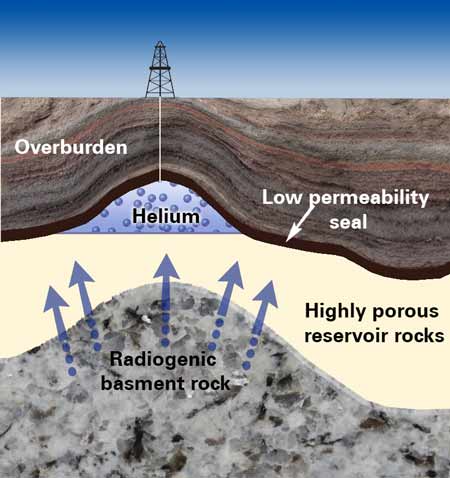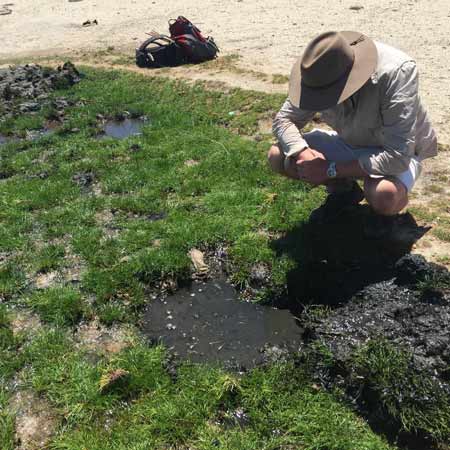Helium exploration
 Helium to date has been found by accident and to explore for the gas is unusual. Today, however it is a highly prized commodity. Many helium occurrences around the globe, including in the UK have gone unnoticed because the chromatographic equipment used to identify and monitor gases at a well site or in the laboratory use helium and or hydrogen as carrier gases and flame ionisation (FID) to detect and monitor the gases.
Helium to date has been found by accident and to explore for the gas is unusual. Today, however it is a highly prized commodity. Many helium occurrences around the globe, including in the UK have gone unnoticed because the chromatographic equipment used to identify and monitor gases at a well site or in the laboratory use helium and or hydrogen as carrier gases and flame ionisation (FID) to detect and monitor the gases.
Where more specialist techniques are used it is possible to identify the inert gas content to include helium.
The exploration for helium is in its infancy. The global supply of helium has so far been provided by a number of finds in the USA, the early ones made purely by chance whilst exploring for hydrocarbon gas, and as a by-product of methane production and liquefaction in a small number of LNG schemes worldwide.
Helium is the decay product of uranium and other naturally occurring radioactive elements. The rocks that contain these radioactive elements tend to be granites. The decay process is slow with half-lives measured in hundreds of thousands to hundreds of millions of years so the sources of most helium are very old plutonic granites that have been emplaced in the earth's crust billions of years ago. In order to release the helium trapped in the granite a more recent heating or tectonic event is needed.
 Once released from the source granites the helium will migrate upwards and emerge at surface through the soil or at seeps. Once in the atmosphere the helium will continue to rise, as it is lighter than air, and be lost in to space. However, in favourable conditions the radiogenic helium may be trapped in the subsurface in a porous reservoir rock below an impermeable seal. Helium in this situation may be combined with other naturally occurring gases, such as nitrogen or carbon dioxide, or with hydrocarbon gases such as methane.
Once released from the source granites the helium will migrate upwards and emerge at surface through the soil or at seeps. Once in the atmosphere the helium will continue to rise, as it is lighter than air, and be lost in to space. However, in favourable conditions the radiogenic helium may be trapped in the subsurface in a porous reservoir rock below an impermeable seal. Helium in this situation may be combined with other naturally occurring gases, such as nitrogen or carbon dioxide, or with hydrocarbon gases such as methane.
Exploration often starts with looking for active seepage; either micro- or macro-seeps, and then focuses on locating the subsurface traps where helium may be confined. As with hydrocarbon and other minerals, exploration techniques such as gravity, magnetics and seismic can be used to form an image of the subsurface before the drilling of boreholes which allow the subsurface fluids to be tested. Concentration of as little as 0.2% helium may be commercial in the right setting, however, ideally helium percentages over 2% are sought.


